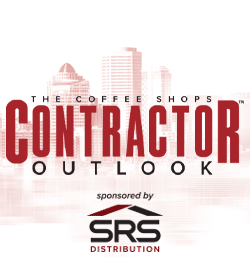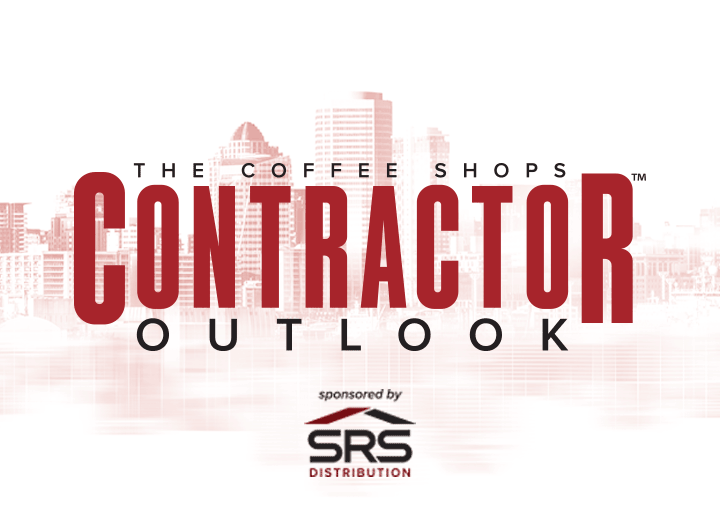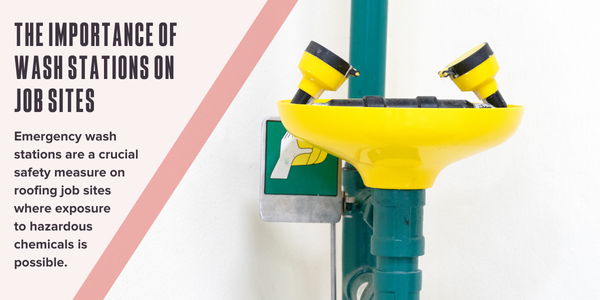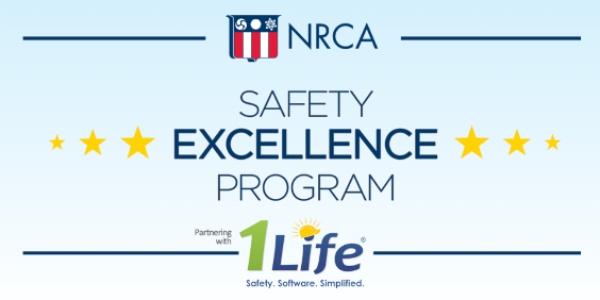UP TO THE MINUTE
The importance of wash stations on job sites
February 23, 2025 at 3:00 a.m.By Cotney Consulting Group.
Emergency wash stations are a crucial safety measure on roofing job sites where exposure to hazardous chemicals is possible.
In the roofing industry, exposure to chemicals is often part of the job, whether it's working with adhesives, sealants or other hazardous substances. Even with careful planning and safety measures, accidents can happen. That's where emergency wash stations come into play. Having wash stations readily available on the job site can be a critical factor in minimizing the severity of chemical exposure incidents, ensuring a safer work environment for everyone.
Why wash stations are essential
New chemical products are introduced to job sites each year, bringing potential exposure risks for roofing workers. While personal protective equipment (PPE) like safety eyewear, face shields and protective clothing are essential, they are not foolproof. In the event of accidental exposure to caustic chemicals or other hazardous substances, emergency wash stations immediately respond to flush out contaminants and reduce potential harm.
Employers must assess the risks on their worksites and ensure the availability of emergency wash stations wherever there is a reasonable chance of chemical exposure. Regular training should make workers fully aware of the location, purpose and proper use of these wash stations.
Maintaining a list of hazardous substances
Given the potential for chemical exposure on roofing sites, maintaining an up-to-date list of hazardous substances at each worksite is crucial. Material Safety Data Sheets (MSDS) for each substance should be readily accessible, providing descriptions of the chemicals, their risks, manufacturer precautions and the necessary first aid measures in case of harmful exposure.
Knowing the characteristics of each chemical, including how they react when mixed with other substances, is key to ensuring worker safety. Some chemicals may become more dangerous when combined with other materials, posing additional risks to handlers and bystanders.
Immediate flushing: The first step in chemical exposure treatment
When chemical contamination occurs on the skin or eyes, the first and most effective treatment is immediate flushing with potable water. Wash stations or emergency showers equipped with large amounts of continuously flowing water are the best tools for flushing chemicals from the body and mitigating harm.
Key considerations for emergency flushing:
- Avoid neutralizing agents: While it might be tempting to use a neutralizing agent, it's generally not recommended for the eyes or skin. Using the wrong agent can exacerbate chemical burns or cause scar tissue formation. Instead, stick to flushing with water as the primary means of decontamination.
- Flushing time: Medical experts recommend flushing the eyes for a minimum of 15 minutes, with many suggesting 20 to 30 minutes for the best results. The length and amount of washing are crucial for effectively removing contaminants and minimizing tissue damage.
Importance of accessible and visible wash stations
In an emergency, every second counts. Medical professionals highlight the importance of having immediate access to a wash station. A worker's chance of full recovery from chemical contamination of the eyes or skin is significantly higher if they reach a wash station within 10 to 15 seconds of exposure.
Tips for wash station placement:
- Highly visible locations: Panic, pain and obscured vision can slow response time, so it's critical to place wash stations in highly visible locations on the job site. Workers should be able to identify and access the station without delay easily.
- Regular training: Conduct regular training sessions to ensure workers know where wash stations are located and how to use them correctly. This preparation can help reduce panic and improve the effectiveness of the emergency response.
Establishing proper first aid procedures
Employers should work with trained medical professionals to develop and regularly review first aid procedures for chemical injuries. First aid protocols should be clear, outlining the steps to take immediately after exposure and the proper use of emergency wash stations.
Elements of a robust first aid procedure:
- Immediate response: Include instructions for reaching the nearest wash station and the appropriate flushing time for different types of chemical exposures.
- Post-exposure care: Outline steps for seeking medical attention after initial flushing, especially for severe exposures.
- Regular review: Update first aid procedures and safety precautions periodically to address any new hazards or changes in the work environment.
Emergency wash stations: Not a substitute for PPE
While wash stations are critical to workplace safety, they are not a substitute for personal protective equipment. Proper use of PPE, including safety goggles, face shields, gloves and protective clothing, should always be the first line of defense against chemical exposure. However, in the event of an accident, having a wash station available can mean the difference between a minor incident and a serious injury.
Emergency wash stations are a crucial safety measure on roofing job sites where exposure to hazardous chemicals is possible. Employers must take steps to ensure these stations are strategically placed, accessible and well-maintained. Roofing contractors can create a safer working environment by providing workers with proper training on the location and use of wash stations, maintaining an up-to-date list of hazardous substances and implementing effective first aid procedures. Quick and effective response to chemical exposure is not just about compliance — it's about protecting the health and safety of your team.
Learn more about Cotney Consulting Group in their Coffee Shop Directory or visit www.cotneyconsulting.com.



















Comments
Leave a Reply
Have an account? Login to leave a comment!
Sign In